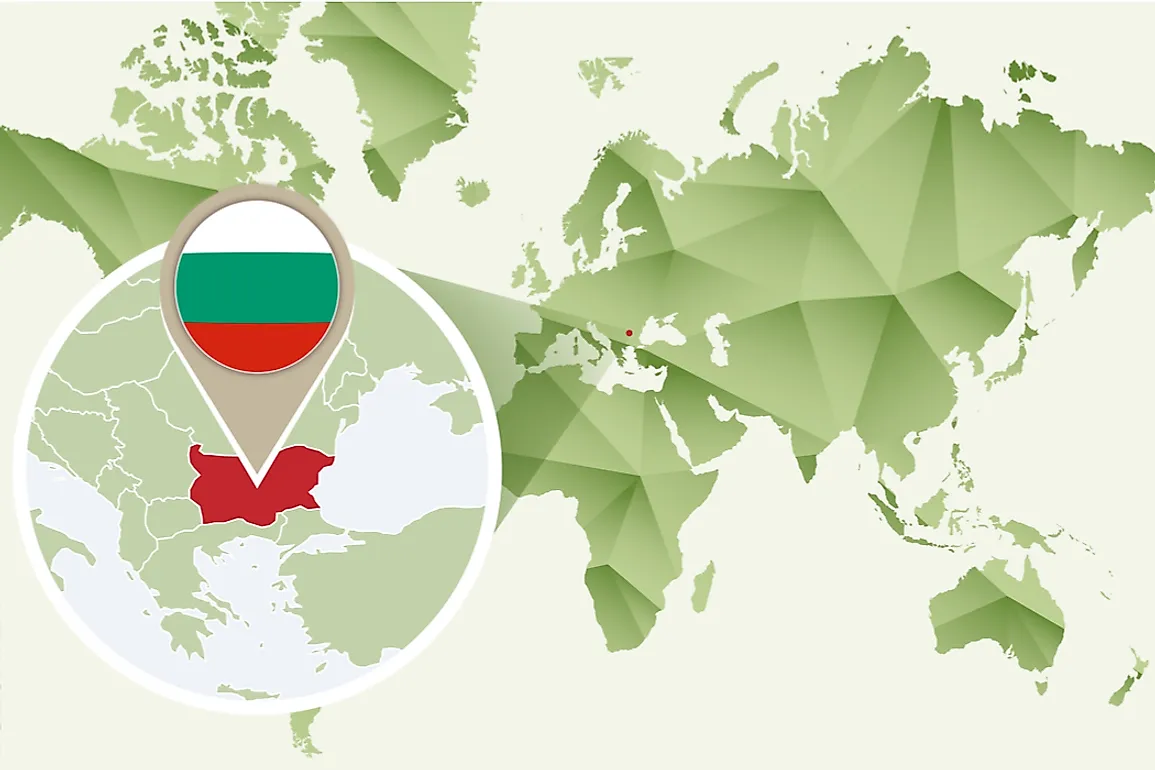Which Continent Is Bulgaria In?

The Republic of Bulgaria is in Southeastern Europe. Bulgaria, located on coordinates 43° N 25° E, borders Romania to the north, Turkey and Greece to the south, Serbia and Macedonia to the west, and the Black Sea to the east. The country covers an area of 42,855 square miles and is the world’s 105th-largest and Europe’s sixteenth largest country with a total land border length of 1,123 miles and a coastline of 220 miles. The Balkan Mountains are right in the middle of Bulgaria while other topographical features within the country’s borders include the Danubian Plain, the Thracian Plain, and the Rhodope Mountains. The main rivers in Bulgaria are rivers Iskar (the longest), Stuma, and the Maritsa. The capital city of Bulgaria is Sofia, the largest city in the country.
Climate
The climate of Bulgaria is dynamic compared to its neighbors and other countries. The country’s position at the intersection of the Continental and Mediterranean air masses as well as the barrier effect caused by the mountains gives different climate zones. The two main climatic conditions are warm temperate humid climate (Cfa classification) and humid snow climate (Dfb Classification). The former’s warmest month average is 71.6°F while the latter’s warmest month averages above 50°F. In addition, the climate sub-divides further into five thus the continental zone, transitional zone, continental-Mediterranean zone, Black Sea zone, and the Alpine zone around the country hence the diverse climatic conditions create habitats for numerous plants and animals.
Governance
Natural resources are crucial sectors of, power, engineering, and agriculture which dominate the economy. The country is a Unitary Parliamentary Constitutional Republic and is headed by a President and has a Prime Minister. Over time, Bulgaria has gone through several distinct periods; the Old Great Bulgaria (632-668 AD), First Bulgarian Empire (681-1018), Second Bulgarian Empire (1185-1396), and Principality of Bulgaria up to the current republic.
Demographics
The 2011 Bulgarian National Census recorded a total of 7,364,570 people living in Bulgaria with 84.8% being the main Bulgarian ethnic groups and the rest being Turkish, Roma and other minorities. Bulgaria is a predominantly urban country with the majority of people in the 28 provinces living in urban areas. The capital, Sofia, has the most commercial and cultural facilities while agriculture, power engineering, and several heavy industries drive the biggest part of the economy. All the ethnic groups are fluent in Bulgarian as a first (85.2% of the population) or second language. Both male and female Bulgarians have an almost equal literacy level which is around 98.6%. Although a secular state, Eastern Orthodoxy is the de facto “traditional religion” of Bulgaria with more than three-quarters of followers. Islam is second with close to 10% of the population.
Major Tourist Attractions
The Pirin National Park in South Bulgaria covering a great part of Pirin Mountain is home to large 118 glacial lakes, the deepest and widest being Popovo lake. Additionally, it is a habitat for 45 species of mammals, eleven species of reptiles, six species of fish, 159 species of birds, and eight species of amphibians. In northeastern Bulgaria is the Srebarna Nature Reserve which preserves 139 species of plants with eleven of them near extinct. The Thracian tomb of Sveshtari is a reminder of the Getae culture which displays architectural décor with half plant caryatids, polychrome half human and painted murals. Finally, the ancient city of Nessebar or the Pearl of the Black Sea in Burgas Province holds a rich history of over three millennia which portrays numerous civilization that took place over the years.











